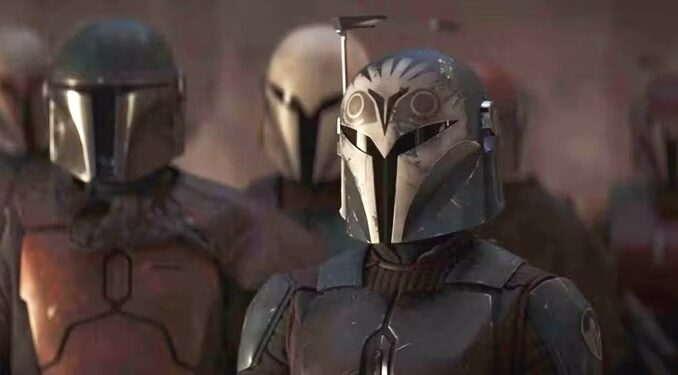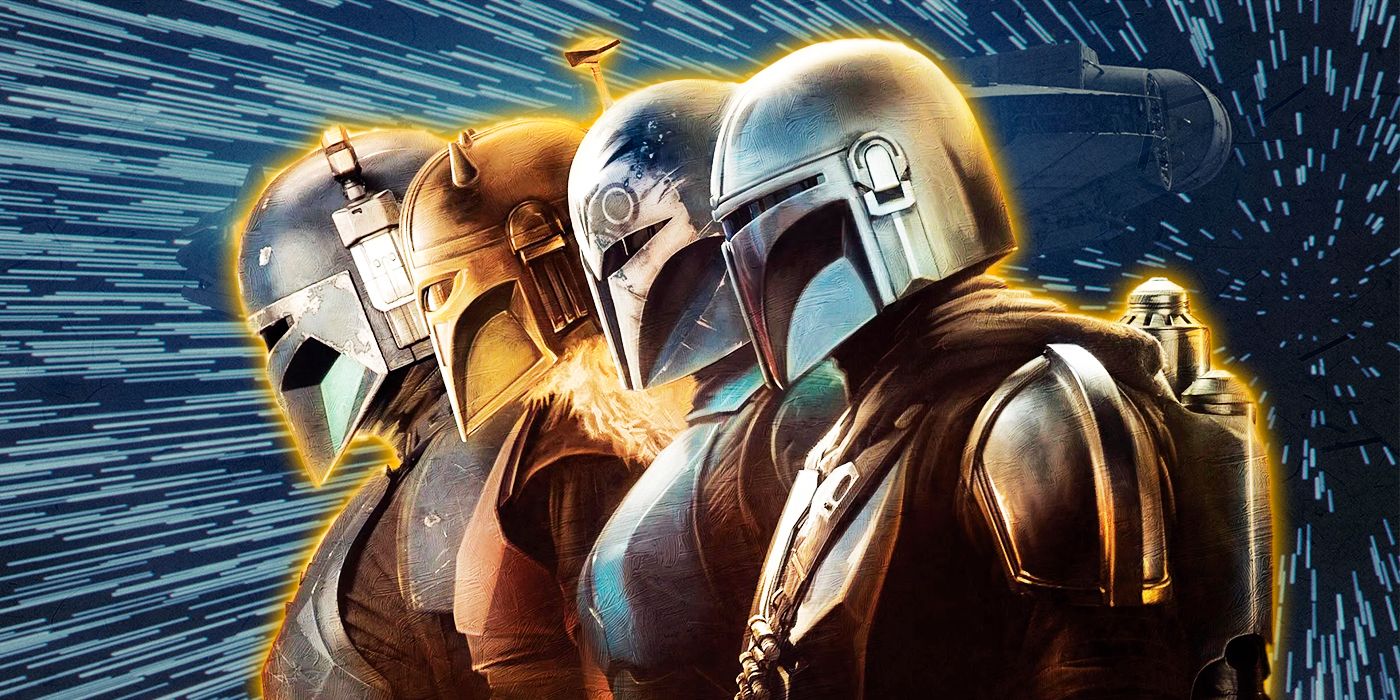
Disney Fixed Star Wars’ Most Convoluted Race
Star Wars: The Clone Wars became a beloved series, but it wreaked havoc with the Mandalorians. Lucas’s return meant that the show was G-canon, or George canon, the highest level of canon in the pre-Disney days. Traviss was tapped to write novels set in the new series to expand more upon the Mandalorians, and much of the lore she created was brought into the present day of the Star Wars universe. However, the show itself would eventually set episodes on Mandalore, which was very different from what came before.

Instead of the temperate, agrarian Earth-like planet with sparse settlements and more traditional cities, Mandalore was more of a desert planet, with the cities being massive enclosed domes. However, the biggest change was the culture. Before The Clone Wars, natives of Mandalore were warrior farmers who left the planet to fight other people’s wars. After thousands of years of conquest, war with the Jedi and Sith prepared them like no other race in the galaxy. After The Clone Wars, the only Mandalorians who were warriors were those of the Death Watch and its spin-offs, with most of the planet’s inhabitants being pacifists, making up for the years of wars their kind had fought.
The Clone Wars also kicked off the saga of the Darksaber, the Mandalorian-made lightsaber that the Manda’lor carried. This was another change to Mandalorian culture from before, as Mandalore didn’t have many items of office up til that point. The interesting thing is that the Death Watch was part of the old Mandalorian canon, playing pretty much the same role as they did in The Clone Wars, a terrorist organization that wanted to return the Mandalorians to the old ways.
The big difference was that in pre-The Clone Wars canon, the Death Watch fought the True Mandalorians for primacy over Mandalore, with the Jedi led by Dooku slaughtering the True Mandalorians after being manipulated by the Death Watch. In the Imperial era, the Death Watch survivors allied with the Empire, helped them get beskar, and started a civil war with Fenn Shysa. The Clone Wars, which would become canon when Disney bought Lucasfilm and got a highly regarded final season, ended with the Death Watch under the command of Darth Maul. It also completely changed the fate of Mandalore.
Mandalore in Legends was hurt by the strip mining of beskar, but it wasn’t completely devastated and was still home to many of the Mandalorians, with the clans having their bases there. This wasn’t possible in Disney canon, as The Mandalorian revealed the Night Of A Thousand Tears to fans—the Empire’s apocalyptic attack on Mandalore that burnt the planet to a crisp. However, some of the canon lore was still inspired by Legends.
For example, before the Night of a Thousand Tears, the Mandalorian Civil War was fought, with the Empire supporting one side so they could mine beskar on the planet and have their troops trained by the Mandalorians as Super Commandos, another name taken from Legends. The Mandalorian also introduced the idea of Mandalorians who always wore their helmets, which was an entirely new idea. Now, many Legends Mandalorians were highly influenced by their warrior culture, wearing their armor or some kind of protection all the time, but none of them kept their helmets on all the time. This was just a practicality of their lifestyle – on the battlefield, they were always ready to fight, and at home, they were always ready for attack.
The armor and helmet were important to them, as were any of their weapons, but that was more because they were warriors and fighters and not because of some inherent sacredness. So, something like the Armorer’s religious zeal for the Creed in The Mandalorian and how she treated her job as the armorer for her clan was unlike anything in Legends. Anyone who could work beskar was a person to be lauded in Legends, but they weren’t pseudo-religious leaders.
The Clone Wars was a huge shock to Legends fans as it was airing because book readers had an entirely different view of Mandalore. The Clone Wars incorporated and changed many things from Legends, Dathomir and the Nightsisters being a huge example of this, so things like the Death Watch and Concordia, the moon of Mandalore that was once known as Concorde Dawn in Legends, were familiar but taken in another direction. Mandalore, as yet another Star Wars desert planet run by a duchess and devoted to pacifism, was the biggest change.
Gone were the fiercely independent Mandos of Legends, who traveled the galaxy fighting and making money because they grew up doing it. In their place was an entirely different race in many ways. The Death Watch was the closest thing to Legends Mandalorians, but the fact that they were all evil made Mandalorian warrior culture seem harmful. This vastly differed from Legends, where Mandalorian warrior culture was somewhat charming, as much related to the Mandalorian love of family and camaraderie.
The Changes To Mandalorians Began Before The Disney Takeover But Became The Order Of The Day
The Mandalorians in Legends started as galaxy-burning crusaders, fighting the Jedi, working with – and sometimes against – the Sith before their losses forced them to become mercenaries. Their warrior ways were balanced with a love of family and children that caused them to adopt orphans, often from races that they were paid to destroy. Family and fighting were the most important things to many of them, and they learned to live in their armor, constantly ready for battle. This was to change when Star Wars: The Clone Wars started. George Lucas’s involvement with the animated series increased its status in canon and completely changed the canon of Legends. The Clone Wars changes stayed canon when Disney bought Lucasfilm and began a new continuity. Everything established later in the timeline, like Kal Skirata and his family of clones and Jedi, was gone.
Elements of Legends were used to flesh out the Mandalorians in the new canon, but the story that started in The Clone Wars carried over to Star Wars: Rebels. The Mandalorian took the elements of family and adoption that were so important to Legends Mandos and added a religious element to the proceedings, tweaking the reverence for their armor and weapons into the Creed. While these similarities can make the two Mandalorian eras interconnected, much has changed.
